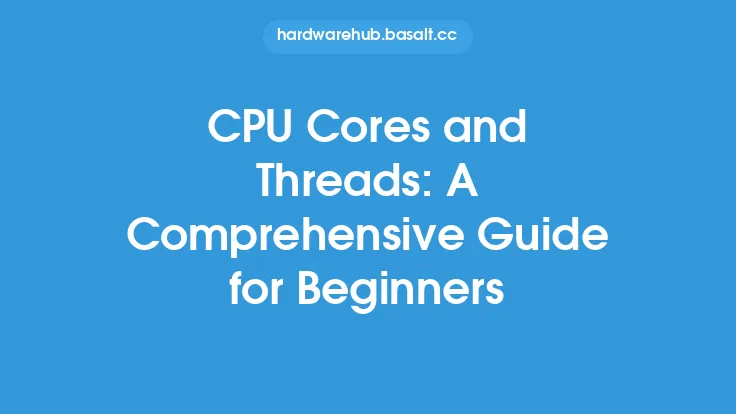The central processing unit (CPU) is the brain of a computer, responsible for executing instructions and handling tasks. At the heart of the CPU are its cores, which are the primary components that perform calculations and execute instructions. In this article, we will delve into the world of CPU cores, exploring what they are, how they work, and their significance in modern computing.
Introduction to CPU Cores
A CPU core is a processing unit within a CPU that executes instructions and handles tasks independently. It is the basic building block of a CPU, responsible for performing calculations, executing instructions, and handling data. A CPU core consists of several key components, including the control unit, arithmetic logic unit (ALU), and registers. The control unit retrieves and decodes instructions, while the ALU performs mathematical and logical operations. Registers, on the other hand, store data temporarily while it is being processed.
How CPU Cores Work
When a CPU receives an instruction, it is decoded and executed by the control unit. The instruction is then sent to the ALU, which performs the necessary calculations. The results are stored in registers, which provide quick access to the data. The CPU core then retrieves the next instruction and repeats the process. This cycle of fetching, decoding, executing, and storing instructions is known as the fetch-decode-execute cycle.
In modern CPUs, multiple cores are integrated into a single processor, allowing for simultaneous execution of multiple instructions. This is known as multi-core processing, which significantly improves the overall performance and efficiency of the CPU. Each core operates independently, executing its own instructions and handling its own tasks. This allows for better multitasking, improved responsiveness, and increased throughput.
CPU Core Architecture
The architecture of a CPU core is designed to optimize performance, power efficiency, and area usage. The core consists of several stages, including the fetch stage, decode stage, execute stage, and store stage. The fetch stage retrieves instructions from memory, while the decode stage decodes the instructions and generates control signals. The execute stage performs the necessary calculations, and the store stage stores the results in memory or registers.
The CPU core also includes a number of components that improve performance, such as cache memory, branch prediction, and out-of-order execution. Cache memory provides quick access to frequently used data, reducing the time it takes to retrieve data from main memory. Branch prediction predicts the outcome of conditional branches, allowing the CPU to execute instructions more efficiently. Out-of-order execution allows the CPU to execute instructions out of sequence, improving overall performance and reducing idle time.
Types of CPU Cores
There are several types of CPU cores, each with its own strengths and weaknesses. The most common types of CPU cores are:
- In-Order Cores: These cores execute instructions in the order they are received, which can lead to idle time and reduced performance.
- Out-of-Order Cores: These cores execute instructions out of sequence, improving overall performance and reducing idle time.
- Superscalar Cores: These cores can execute multiple instructions simultaneously, improving overall performance and throughput.
- Pipelined Cores: These cores use a pipeline architecture to improve performance, breaking down the execution process into a series of stages.
CPU Core Manufacturing
The manufacturing process of CPU cores involves several stages, including design, fabrication, and testing. The design stage involves creating the architecture and layout of the CPU core, using specialized software and hardware. The fabrication stage involves manufacturing the CPU core using semiconductor materials, such as silicon. The testing stage involves verifying the functionality and performance of the CPU core, using specialized equipment and software.
The manufacturing process of CPU cores is complex and challenging, requiring significant expertise and resources. The process involves creating tiny transistors and interconnects on a silicon wafer, using techniques such as lithography and etching. The resulting CPU core is then packaged and integrated into a larger processor, which is used in a wide range of applications, from smartphones to servers.
Conclusion
In conclusion, CPU cores are the primary components of a CPU, responsible for executing instructions and handling tasks. They consist of several key components, including the control unit, ALU, and registers, and operate using the fetch-decode-execute cycle. Modern CPUs use multi-core processing, which significantly improves performance and efficiency. The architecture of a CPU core is designed to optimize performance, power efficiency, and area usage, and includes components such as cache memory, branch prediction, and out-of-order execution. There are several types of CPU cores, each with its own strengths and weaknesses, and the manufacturing process involves several stages, including design, fabrication, and testing. Understanding CPU cores is essential for appreciating the complexity and sophistication of modern computing systems.





